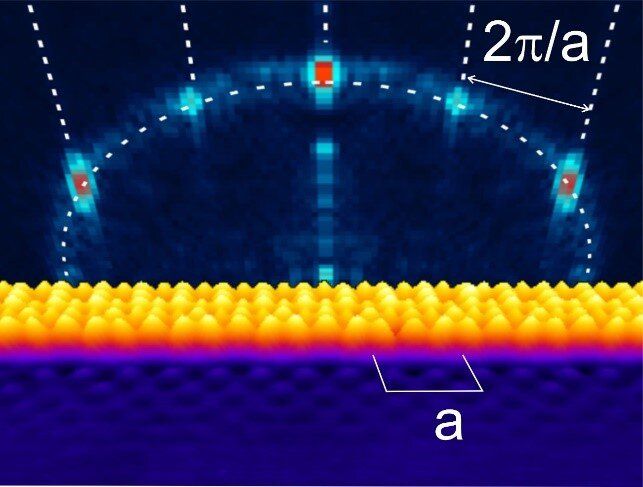Nanostructures can be designed such a way that the quantum confinement allows only certain electron energy levels. Researchers from IMDEA Nanociencia, UAM and ICMM-CSIC have, for the first time, observed a discrete pattern of electron energies in an unconfined system, which could lead to new ways of modifying the surface properties of materials.
A research group from IMDEA Nanoscience and Universidad Autónoma de Madrid has found for the first time experimental evidence that one-dimensional lattices with nanoscale periodicity can interact with the electrons from a bidimensional gas by spatially separating their different wavelengths by means of a physical phenomenon known as Bragg diffraction. This phenomenon is well-known for wave propagation in general and is responsible for the iridescent color observed upon illumination of a CD surface. Due to the wave-particle duality proposed by De Broglie in 1924, electrons also present a wave-like behavior and, thus, diffraction phenomena. Actually, the observation that low-energy free electrons undergo diffraction processes upon interaction with well-ordered atomic lattices on solid surfaces was the first experimental confirmation of the wave-particle duality.
